YEAR 2022
WHAT Solo show
WHRE CRAC Occitanie / Sète [FR]
INFO Curated by Marie Cozette
INFO Performance by Samir Boumediene
In the context of his 2021 residency at the Villa Médicis, Paul Loubet conducted research into Civilization II, a strategy and conquest video game that consists in creating an empire, by means of nothing less than the destruction of all surrounding others. Civilization II belongs to a broader family of « 4X » games (eXplore eXpand eXploit eXterminate). Imperialism and cultural domination, whose final stage would be extermination, are among the objects of these games. Alongside analysis of the game, Paul Loubet took advantage of his residency to study the iconographic resources of the Vatican’s Galleria delle carte geografiche, a 120-metre-long gallery painted by Ignazio Danti between 1580 and 1585, which presents obvious analogies with the isometric views of another video game calles Age of Empires. In the course of his research, Paul Loubet has unearthed the script of a round of the 1990s game, the visual inspiration for a series of new paintings. A large tryptic in the form of an altarpiece represents the end game, the map of a world that sees Rome dominating all other civilisations. From the 1990s game, the artist has preserved the pixelated visual aspect, a simple and flat colour palette, and a system of representation with no depth or base line. Like a game archaeologist, and as if to better conjure up the horror that the domination of all by one can inspire, the artist confronts us with a depiction of the end of the world : the map produced sets out past conquests and destructions, while projecting us into a dystopian future, where a single culture reigns. If the format that Paul Loubet revisits here refers to historical and religious painting (the altarpiece), the deployed motifs stem from the mass culture and entertainment that is embodied by video games. Shifting our perspective on these different worlds, the artist radically and thoroughly decompartmentalises them. On the map, Paul Loubet places several cartouches, a series of those ornamental frames found in classical painting and sculpture. Like visual comments, these windows represent different elements of the game, such as the « wonders », exceptional architectural accomplishments that Paul Loubet brings into cohabitation in one same space: the Eiffel Tower, the Great Wall of China, and the Sistine Chapel. In another cartouche, the artist depicts the Villa Médicis of the future, half-palace, half-favela… He invites us to visually explore this map teeming with stories, while suggesting several points of visual focus: it is at once very large, so that this world can be viewed as a whole, and very close-up, so one can discover all the details that bring the surface of the canvas alive.
In addition to this tryptic, five large paintings offer five close-ups on several of the game’s key dates. Each painting takes its title from the date and way in which it was documented by the player. Happy anachronisms see Romans walking on the moon in 1904; in 2009 it’s the launch of the spaceship Julius Caesar, bound for Alpha Centauri; in 4000 BC, the founding of Rome; in 1440 BC, the first round-the-world trip by General Agrippa; and in 350 BC, Rome establishes its first contact with Carthage. The artist freely reinterprets those moments of the game, taking inspiration from a wide variety of cartographic references, including a book of 13th-century Islamic maps, a fragment of a 3rd-century plan of Rome, and a military map of the American Civil War. All of this iconographic research is compiled in a document made available to the public at the entrance to the exhibition. Across from the large paintings, Paul Loubet presents a series of works more similar to miniatures: screen prints, etchings, paint on aluminium, prints on sales receipts, etc., which draw upon various aspects of the game. Paul Loubet enjoys mixing the precision of certain printing techniques with the low-fi look of simple colouring by hand or the use of sales receipts as printing mediums, casually dismantling categories and hierarchies within different artistic genres.
The Machine chronographique presents a summary of the video game in time and space. On an chronological frieze, all of the civilisations visible at the beginning gradually disappear to the advantage of conquering Rome, which occupies all of the space. Under this timeline, visitors can manually activate a procession of different game data, such as cities, population numbers, conflicts, scientific discoveries, and structures. The Tabula Itineraria, a geo-temporal fresco printed on a sales receipt, depicts all of the roads leading to Rome, while L’échelle des éliminations compiles the revolts and revolutions in the game. L’arbre des technologies, which could evoke a network of electronic circuits, graphically translates all knowledge, beliefs, and the way these are assimilated and appropriated in the course of the game. In other series, Paul Loubet offers focuses on battles (Battle Maps), translates the continents into logotypes (Les 9 continents), presents Rome’s rail network map (Roma Rail Map), and paints the eight coliseums that he spotted in the game, those of Rome, Beijing, Guangzhou, Carthage, Macao… Between formal and technical experimentation, visual games, and the synthesis of an enormous variety of cultural references, Paul Loubet takes the archive of a game and turns it into a world of infinite explorations.
TEXT Marie Cozette
VIDEO





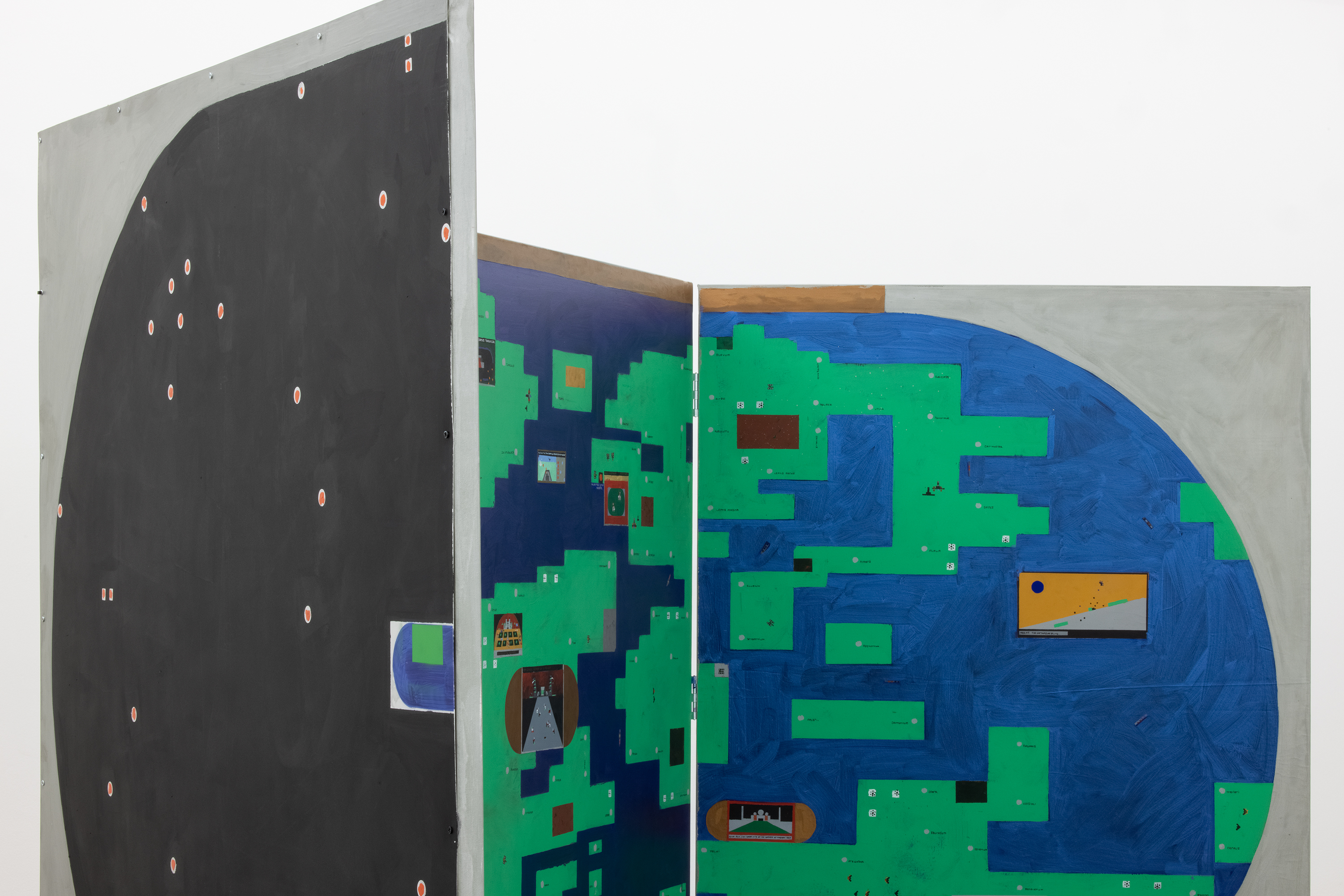
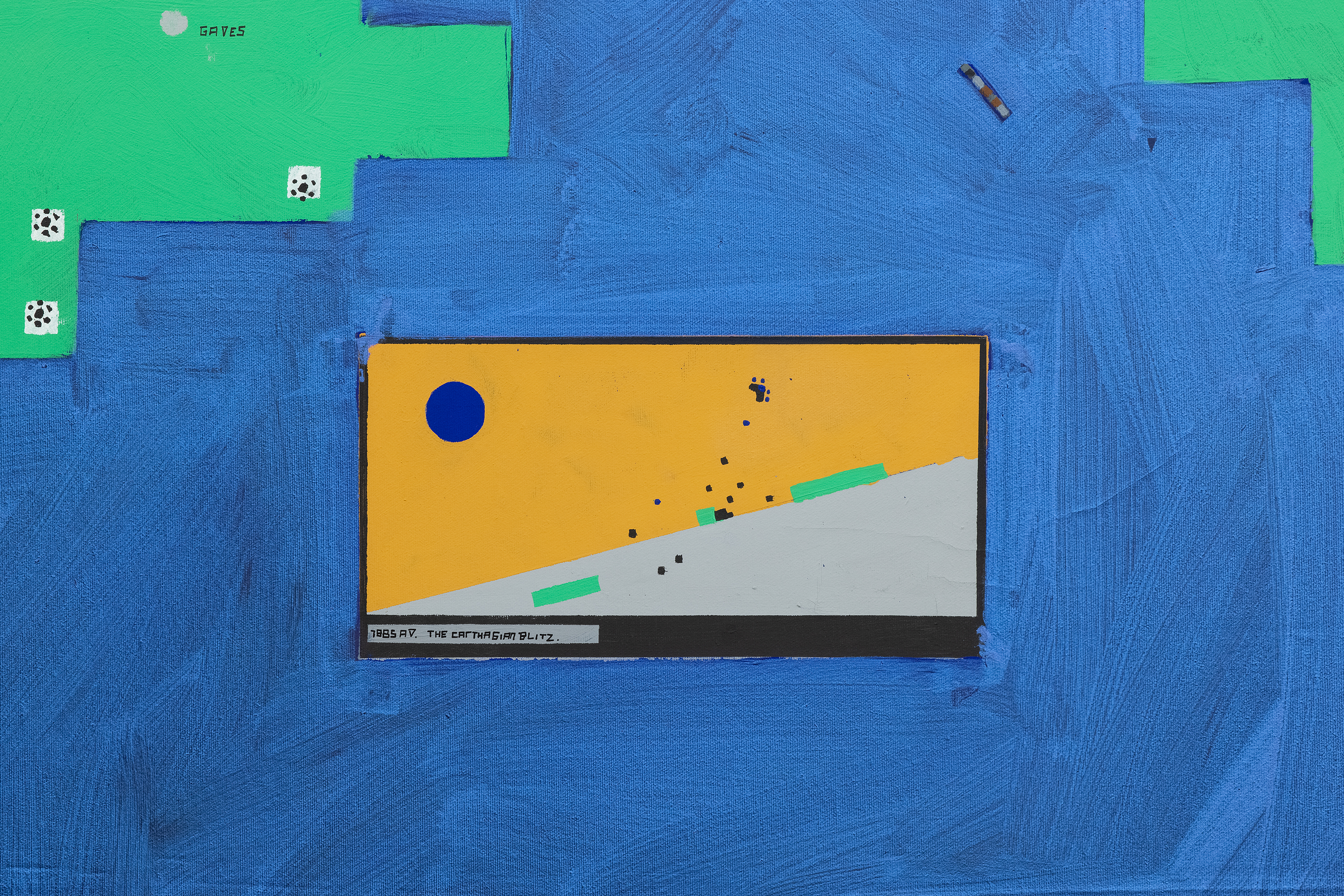
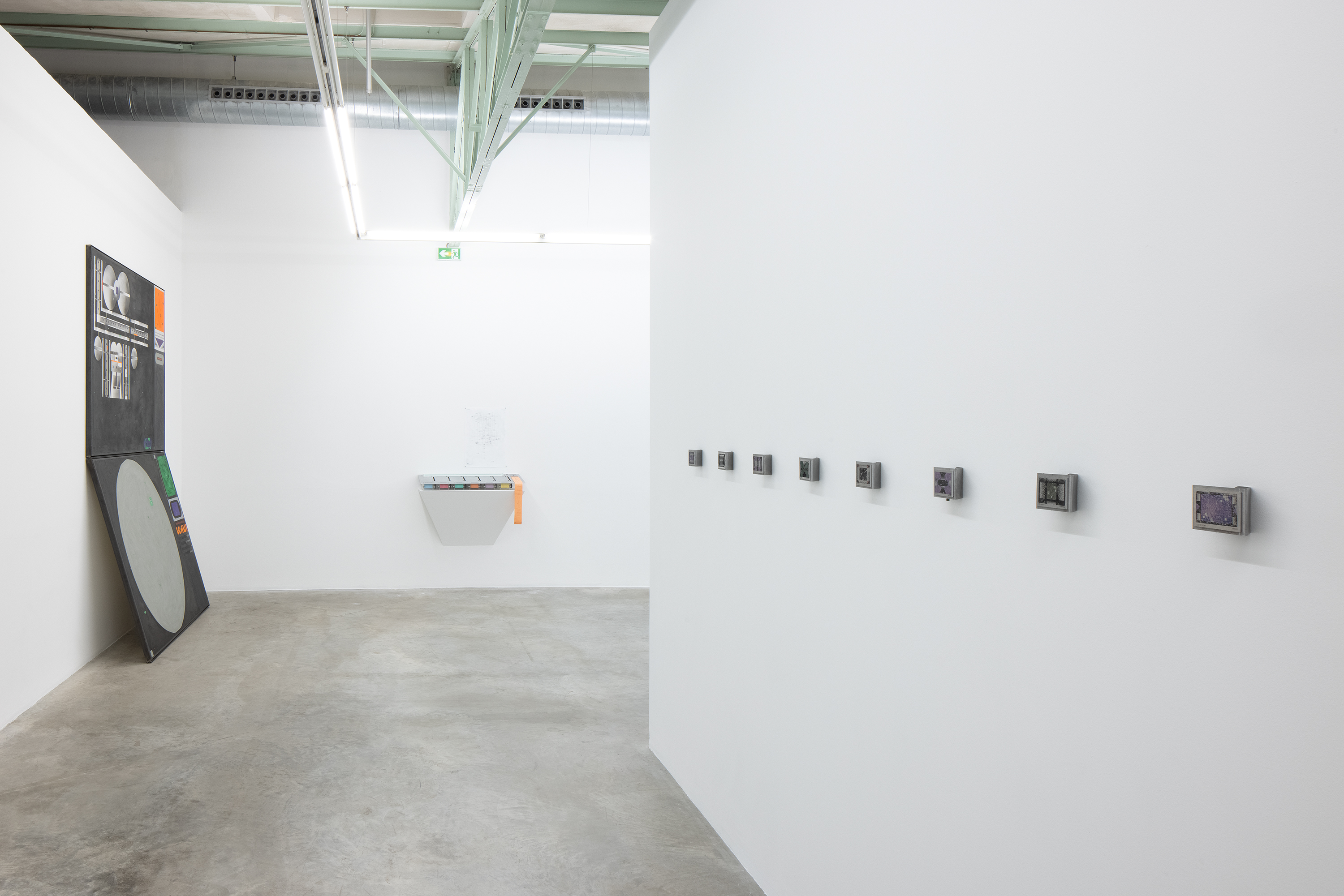

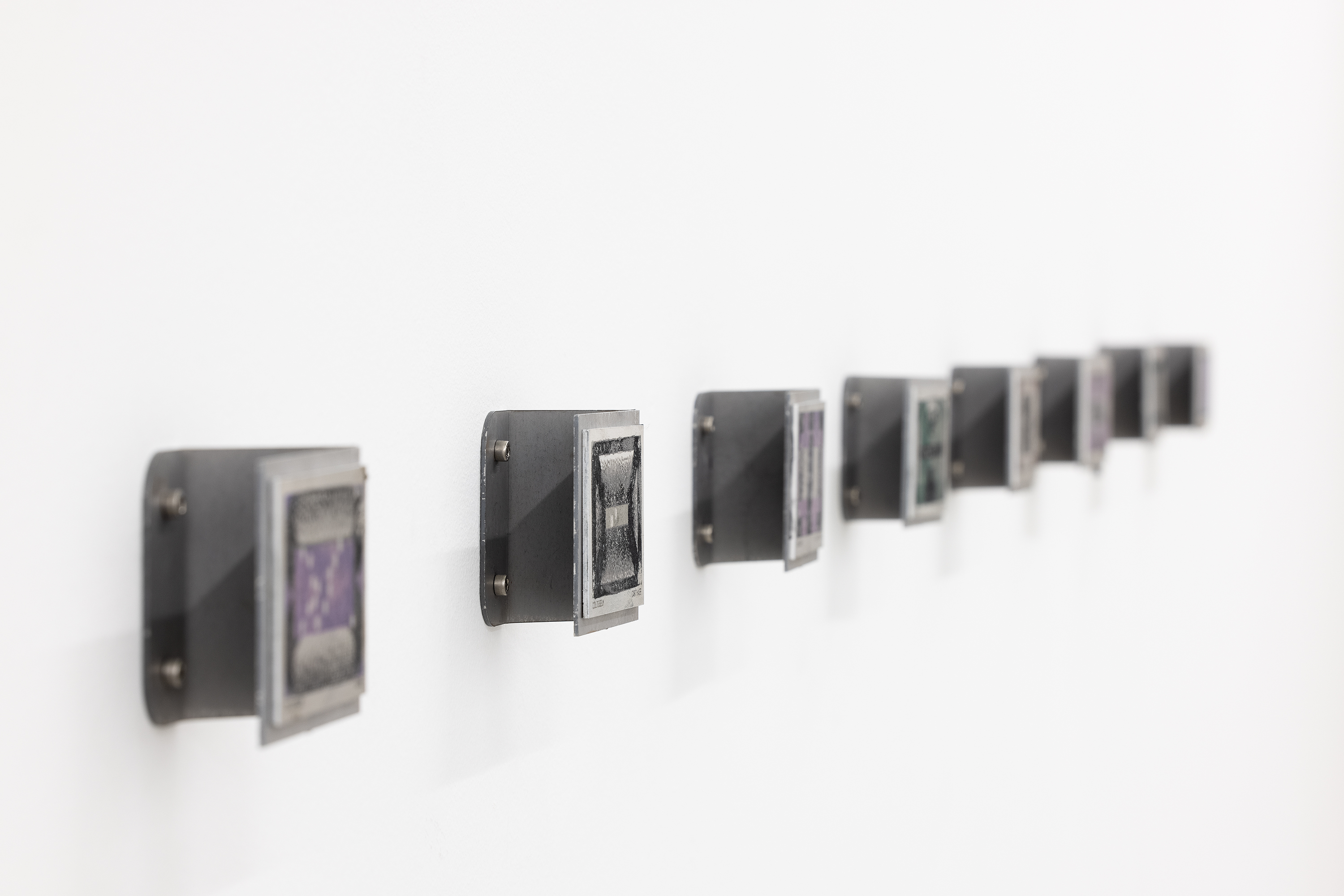
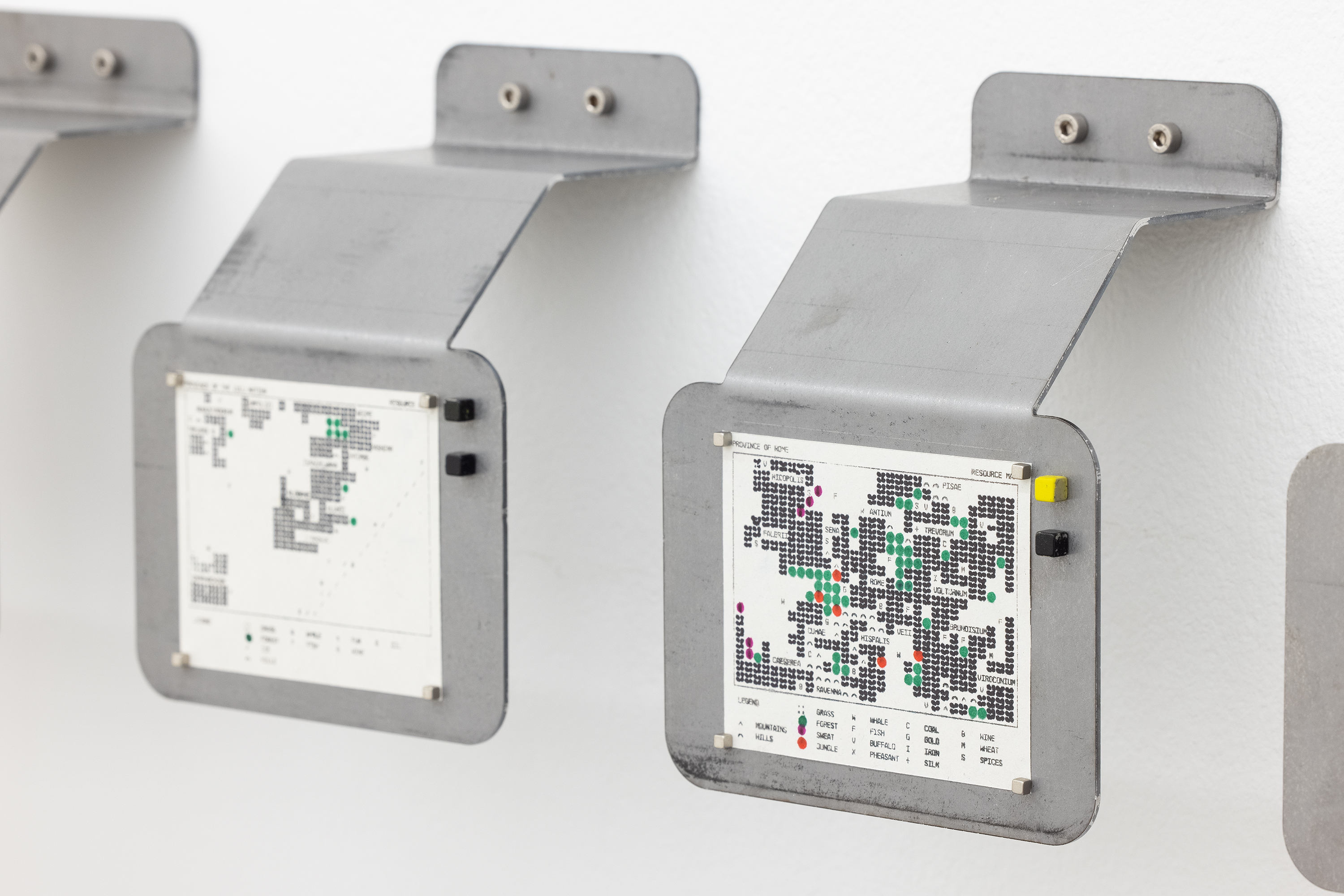
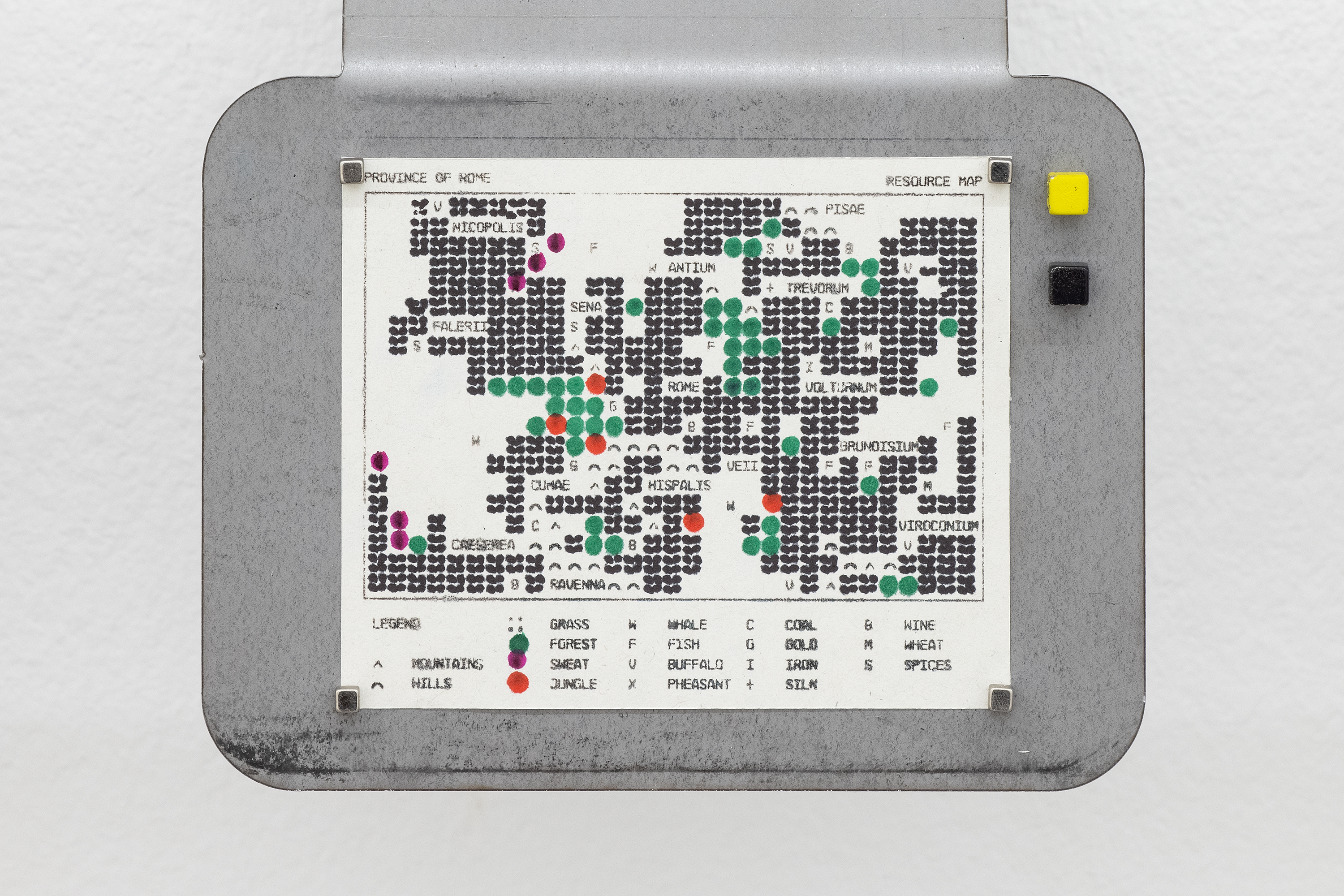
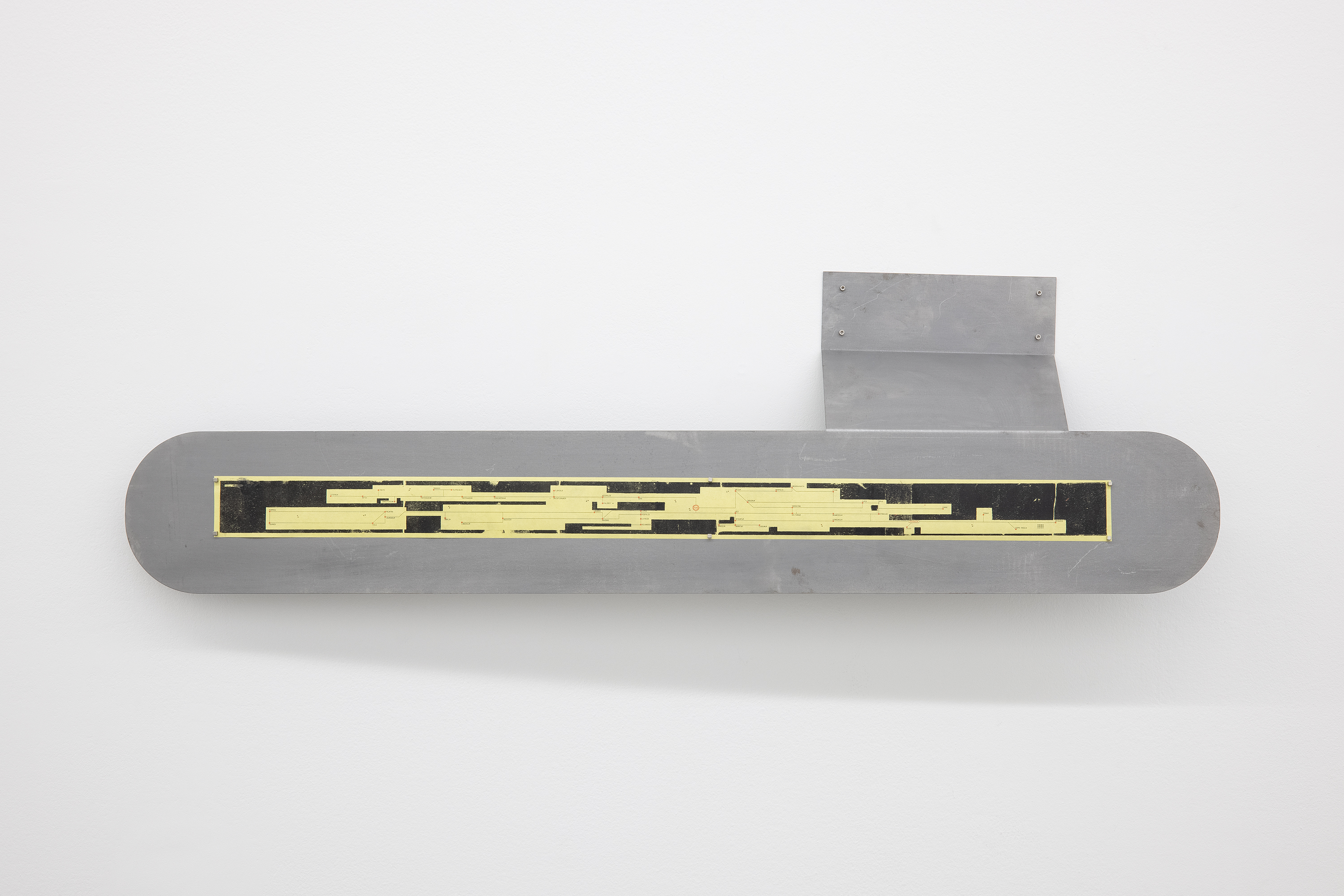
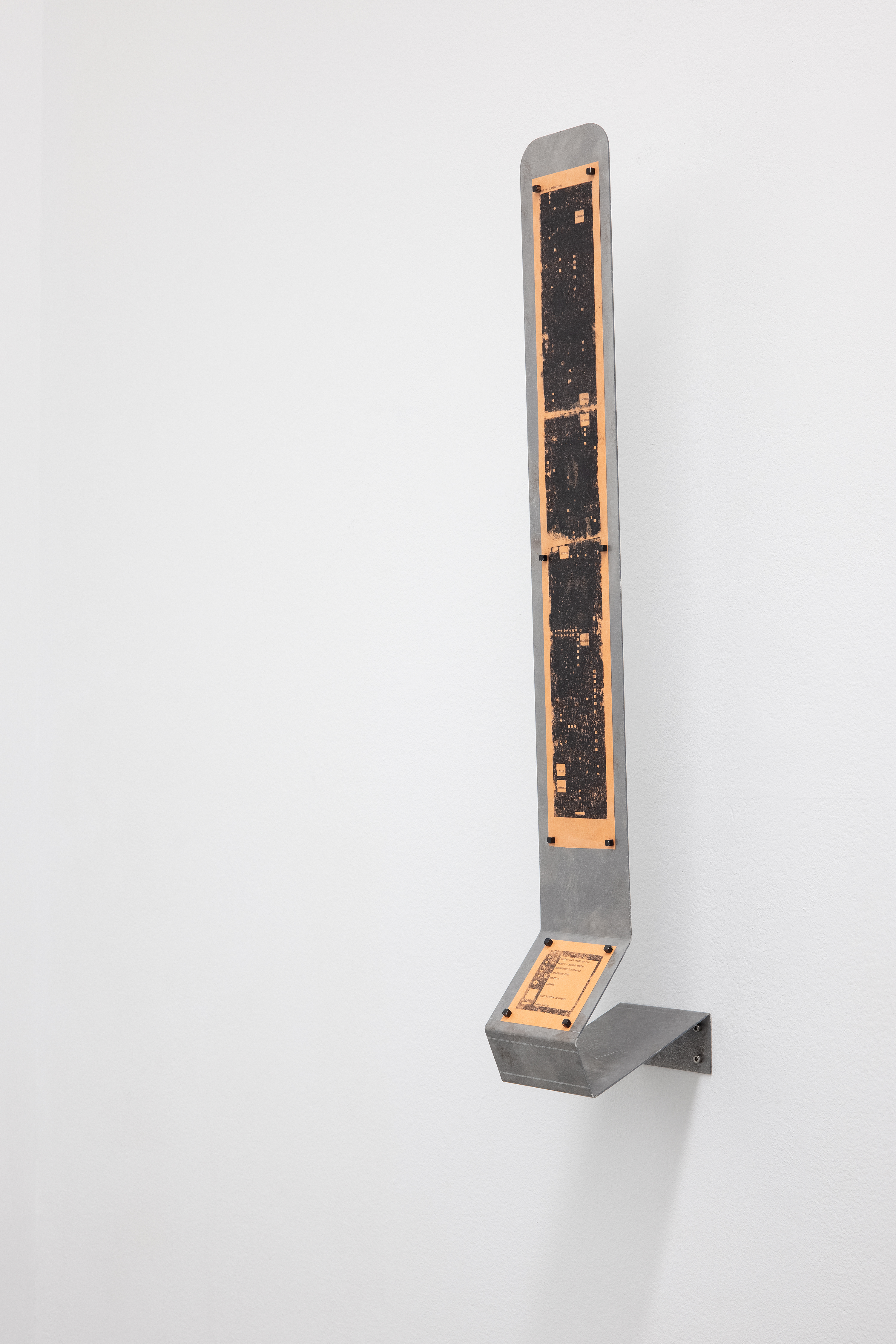

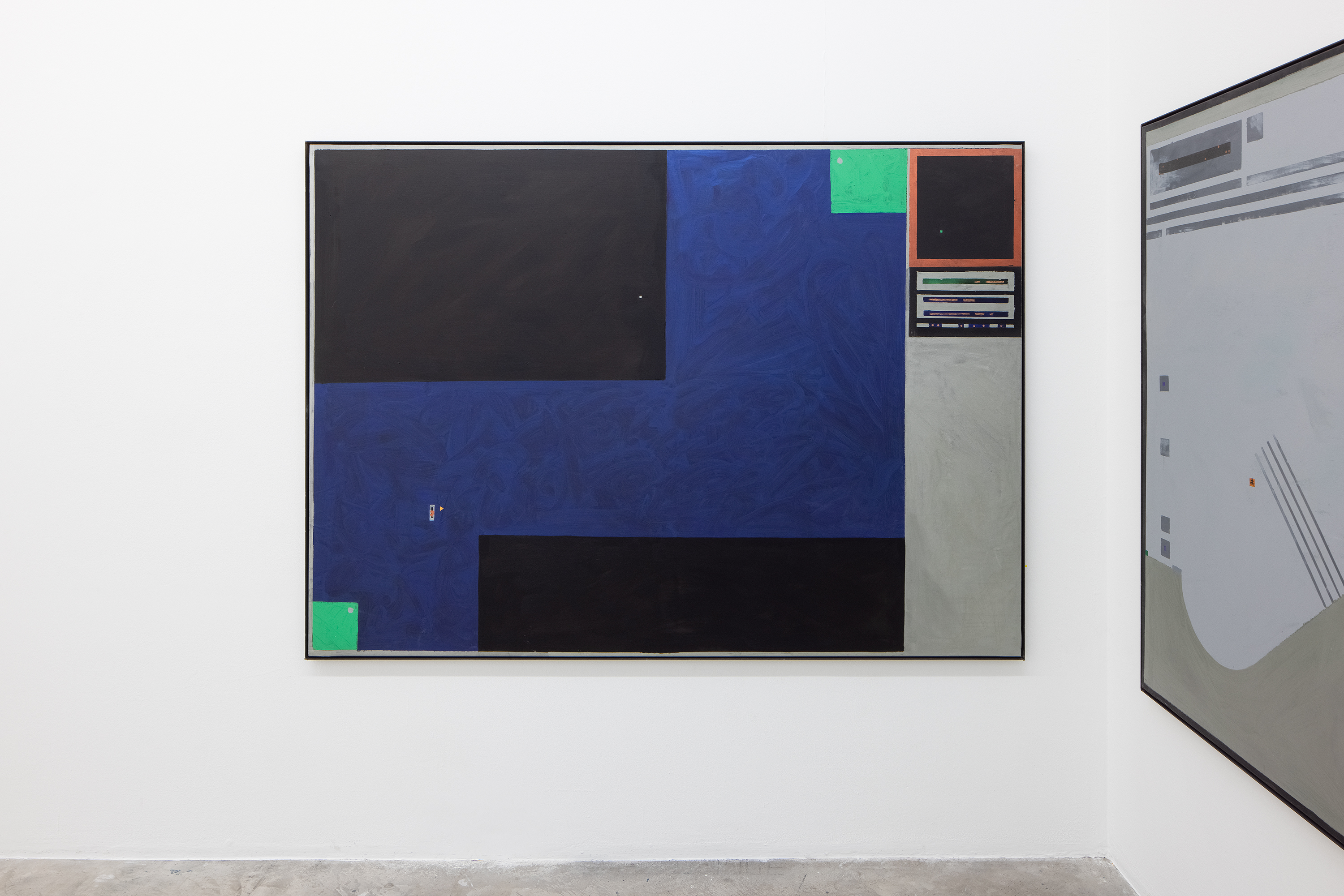
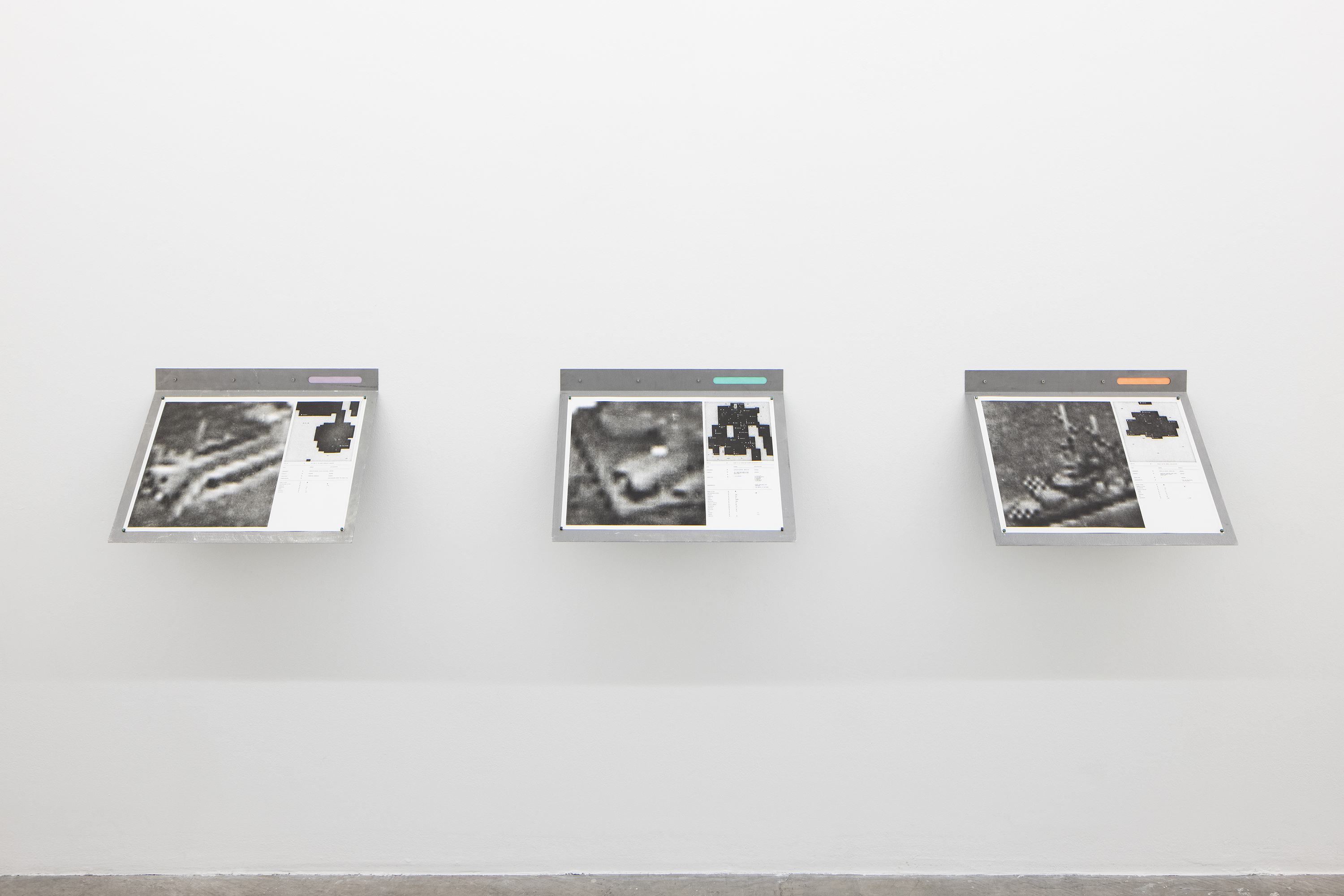






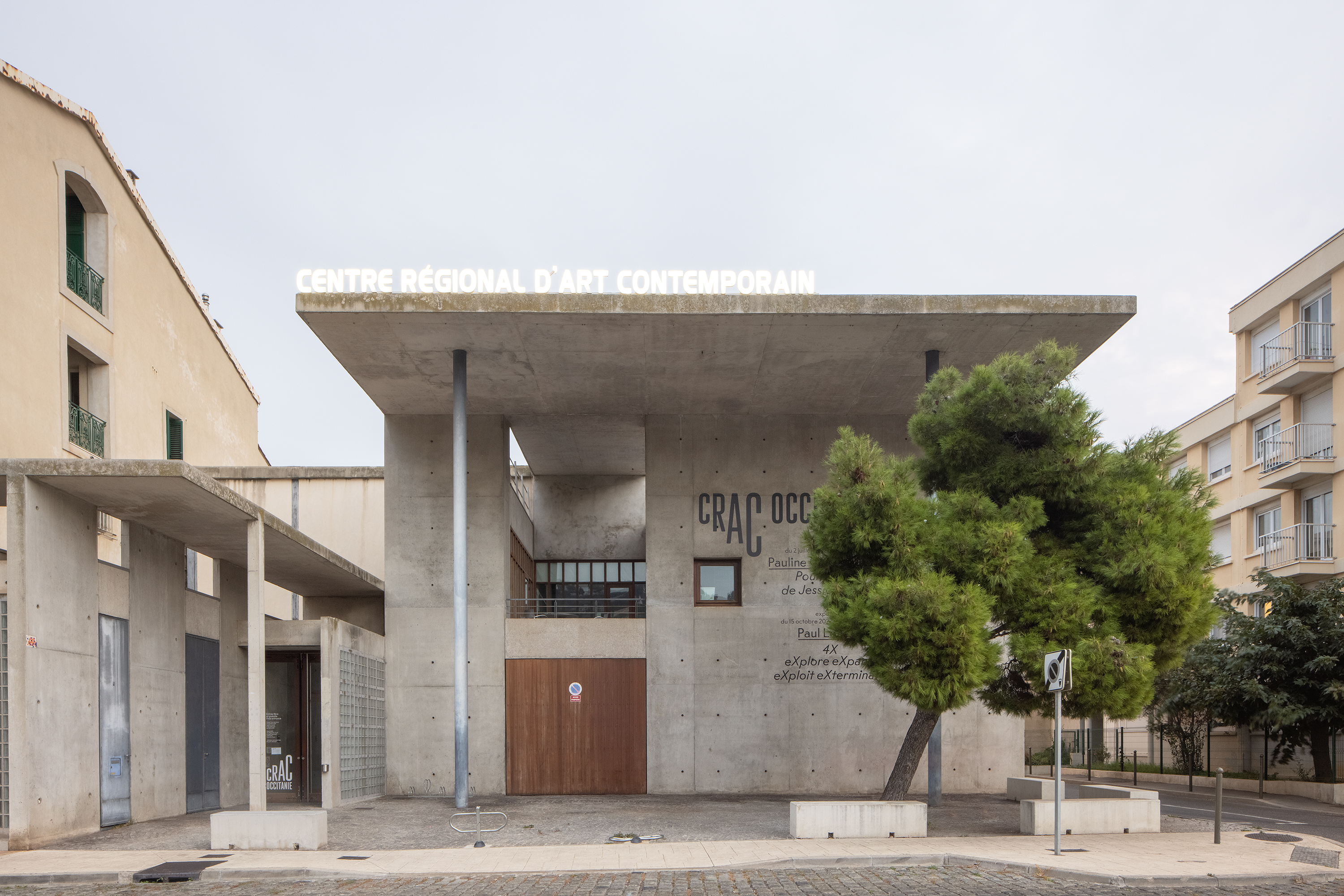
YEAR 2022
WHAT Solo show
WHRE CRAC Occitanie / Sète [FR]
INFO Curated by Marie Cozette
INFO Performance by Samir Boumediene
In the context of his 2021 residency at the Villa Médicis, Paul Loubet conducted research into Civilization II, a strategy and conquest video game that consists in creating an empire, by means of nothing less than the destruction of all surrounding others. Civilization II belongs to a broader family of « 4X » games (eXplore eXpand eXploit eXterminate). Imperialism and cultural domination, whose final stage would be extermination, are among the objects of these games. Alongside analysis of the game, Paul Loubet took advantage of his residency to study the iconographic resources of the Vatican’s Galleria delle carte geografiche, a 120-metre-long gallery painted by Ignazio Danti between 1580 and 1585, which presents obvious analogies with the isometric views of another video game calles Age of Empires. In the course of his research, Paul Loubet has unearthed the script of a round of the 1990s game, the visual inspiration for a series of new paintings. A large tryptic in the form of an altarpiece represents the end game, the map of a world that sees Rome dominating all other civilisations. From the 1990s game, the artist has preserved the pixelated visual aspect, a simple and flat colour palette, and a system of representation with no depth or base line. Like a game archaeologist, and as if to better conjure up the horror that the domination of all by one can inspire, the artist confronts us with a depiction of the end of the world : the map produced sets out past conquests and destructions, while projecting us into a dystopian future, where a single culture reigns. If the format that Paul Loubet revisits here refers to historical and religious painting (the altarpiece), the deployed motifs stem from the mass culture and entertainment that is embodied by video games. Shifting our perspective on these different worlds, the artist radically and thoroughly decompartmentalises them. On the map, Paul Loubet places several cartouches, a series of those ornamental frames found in classical painting and sculpture. Like visual comments, these windows represent different elements of the game, such as the « wonders », exceptional architectural accomplishments that Paul Loubet brings into cohabitation in one same space: the Eiffel Tower, the Great Wall of China, and the Sistine Chapel. In another cartouche, the artist depicts the Villa Médicis of the future, half-palace, half-favela… He invites us to visually explore this map teeming with stories, while suggesting several points of visual focus: it is at once very large, so that this world can be viewed as a whole, and very close-up, so one can discover all the details that bring the surface of the canvas alive.
In addition to this tryptic, five large paintings offer five close-ups on several of the game’s key dates. Each painting takes its title from the date and way in which it was documented by the player. Happy anachronisms see Romans walking on the moon in 1904; in 2009 it’s the launch of the spaceship Julius Caesar, bound for Alpha Centauri; in 4000 BC, the founding of Rome; in 1440 BC, the first round-the-world trip by General Agrippa; and in 350 BC, Rome establishes its first contact with Carthage. The artist freely reinterprets those moments of the game, taking inspiration from a wide variety of cartographic references, including a book of 13th-century Islamic maps, a fragment of a 3rd-century plan of Rome, and a military map of the American Civil War. All of this iconographic research is compiled in a document made available to the public at the entrance to the exhibition. Across from the large paintings, Paul Loubet presents a series of works more similar to miniatures: screen prints, etchings, paint on aluminium, prints on sales receipts, etc., which draw upon various aspects of the game. Paul Loubet enjoys mixing the precision of certain printing techniques with the low-fi look of simple colouring by hand or the use of sales receipts as printing mediums, casually dismantling categories and hierarchies within different artistic genres.
The Machine chronographique presents a summary of the video game in time and space. On an chronological frieze, all of the civilisations visible at the beginning gradually disappear to the advantage of conquering Rome, which occupies all of the space. Under this timeline, visitors can manually activate a procession of different game data, such as cities, population numbers, conflicts, scientific discoveries, and structures. The Tabula Itineraria, a geo-temporal fresco printed on a sales receipt, depicts all of the roads leading to Rome, while L’échelle des éliminations compiles the revolts and revolutions in the game. L’arbre des technologies, which could evoke a network of electronic circuits, graphically translates all knowledge, beliefs, and the way these are assimilated and appropriated in the course of the game. In other series, Paul Loubet offers focuses on battles (Battle Maps), translates the continents into logotypes (Les 9 continents), presents Rome’s rail network map (Roma Rail Map), and paints the eight coliseums that he spotted in the game, those of Rome, Beijing, Guangzhou, Carthage, Macao… Between formal and technical experimentation, visual games, and the synthesis of an enormous variety of cultural references, Paul Loubet takes the archive of a game and turns it into a world of infinite explorations.
TEXT Marie Cozette
VIDEO